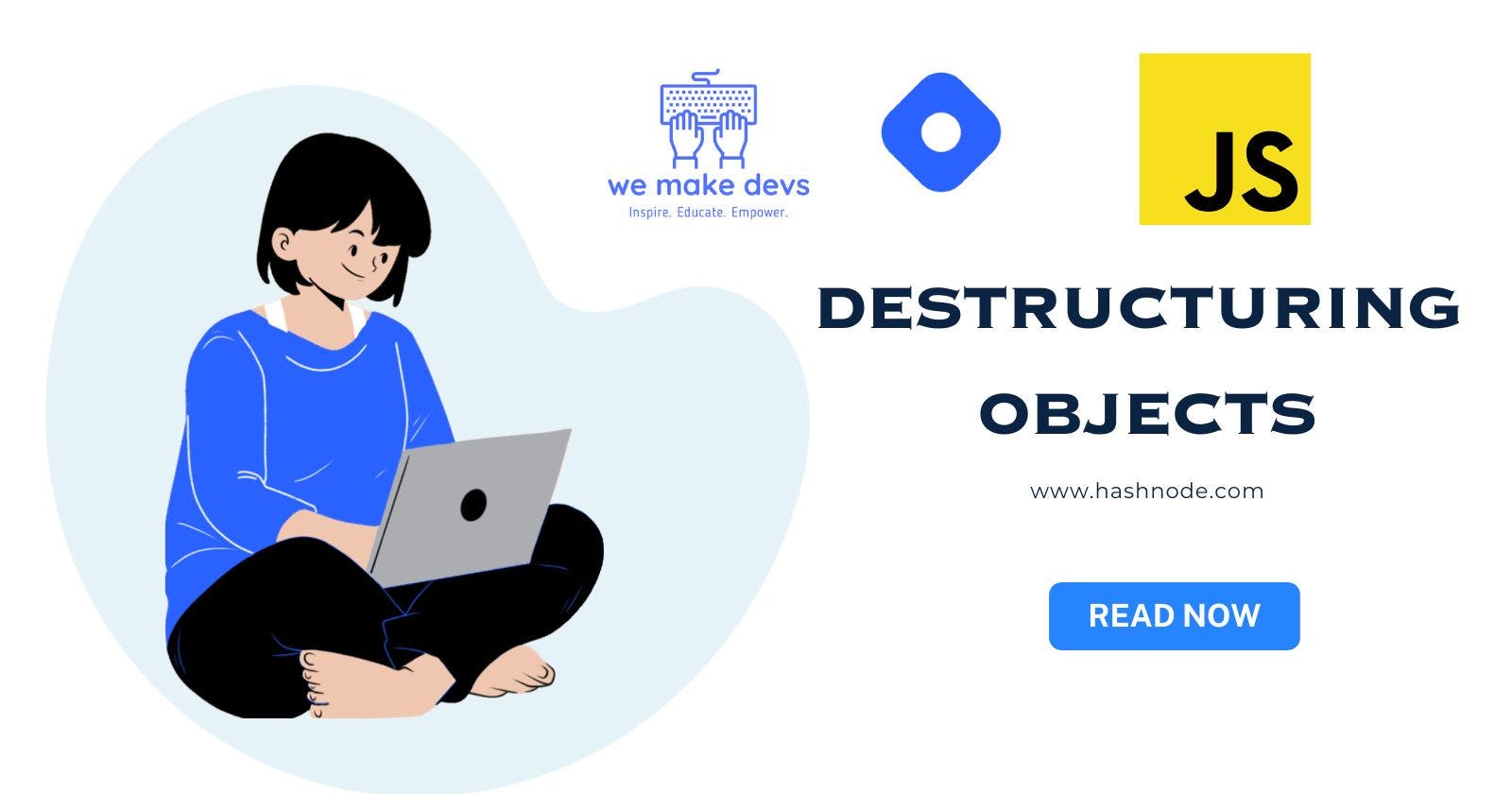JavaScript, the versatile language that drives the web, offers an array of features that empower developers to write cleaner and more efficient code. One such feature is object destructuring, introduced in ECMAScript 6 (ES6), which allows developers to extract values from objects with ease and elegance. In this blog, we'll delve into the world of object destructuring in JavaScript and explore its capabilities.
Understanding Object Destructuring
In JavaScript, object destructuring provides a convenient way to extract properties from objects and assign them to variables. The syntax involves the use of curly braces {}. Let's begin with a simple example:
// Sample object
const person = {
name: 'John Doe',
age: 30,
occupation: 'Web Developer',
};
// Destructuring assignment
const { name, age, occupation } = person;
console.log(name); // Output: 'John Doe'
console.log(age); // Output: 30
console.log(occupation); // Output: 'Web Developer'
In this example, we declared an object person containing three properties. By using object destructuring, we extracted each property and assigned them to the corresponding variables name, age, and occupation.
Renaming Variables
Sometimes, the variable names we want to use might be different from the property names in the object. Object destructuring allows us to assign the extracted values to variables with custom names.
const student = {
fullName: 'Alice Smith',
grade: 'A',
};
// Custom variable names using destructuring
const { fullName: studentName, grade: finalGrade } = student;
console.log(studentName); // Output: 'Alice Smith'
console.log(finalGrade); // Output: 'A'
In the above example, we renamed the extracted properties fullName and grade to studentName and finalGrade, respectively.
Default Values
Similar to array destructuring, we can provide default values when extracting properties from an object. If the object doesn't have a property, the variable will take the specified default value.
const book = {
title: 'JavaScript for Beginners',
author: 'Jane Doe',
};
// Destructuring with default values
const { title, author, year = 2023 } = book;
console.log(title); // Output: 'JavaScript for Beginners'
console.log(author); // Output: 'Jane Doe'
console.log(year); // Output: 2023 (default value)
In this case, since the year property doesn't exist in the book object, the variable year takes the default value of 2023.
Nested Objects
Object destructuring can also handle nested objects, allowing us to access deeply nested properties effortlessly.
const user = {
name: 'Sam',
age: 25,
contact: {
email: 'sam@example.com',
phone: '123-456-7890',
},
};
// Destructuring nested objects
const { name, contact: { email, phone } } = user;
console.log(name); // Output: 'Sam'
console.log(email); // Output: 'sam@example.com'
console.log(phone); // Output: '123-456-7890'
In this example, we've destructured the user object and extracted the email and phone properties from the nested contact object.
Using Object Destructuring with Functions
Object destructuring integrates seamlessly with function parameters, making it convenient to work with objects in function arguments and return values.
function getDetails() {
return {
firstName: 'Emma',
lastName: 'Johnson',
country: 'USA',
};
}
// Using object destructuring with functions
const { firstName, lastName, country } = getDetails();
console.log(firstName); // Output: 'Emma'
console.log(lastName); // Output: 'Johnson'
console.log(country); // Output: 'USA'
The getDetails function returns an object containing personal information, and by leveraging object destructuring, we extract these details into variables.
Conclusion
Object destructuring is a powerful feature in JavaScript that simplifies object handling and enhances code readability. By unpacking object properties into variables, developers can streamline their code, access deeply nested values, and avoid repetitive dot notation. Additionally, renaming variables and providing default values further boost the flexibility of object destructuring.
Now that you've demystified object destructuring in JavaScript, you have a powerful tool at your disposal for manipulating objects with elegance and efficiency. Embrace the potential within those curly braces and take your JavaScript coding to the next level!
